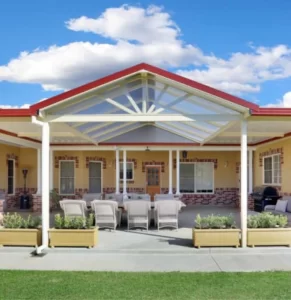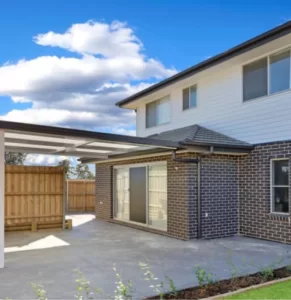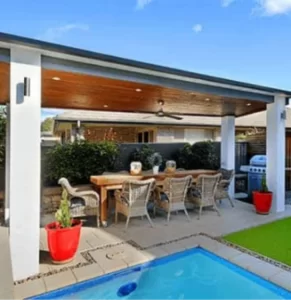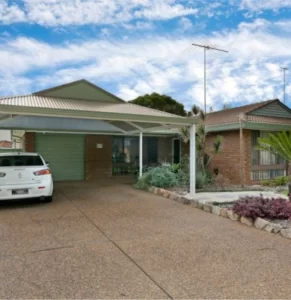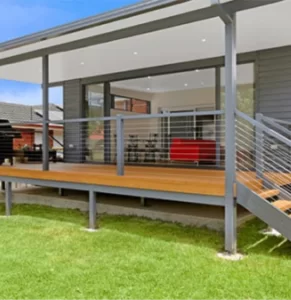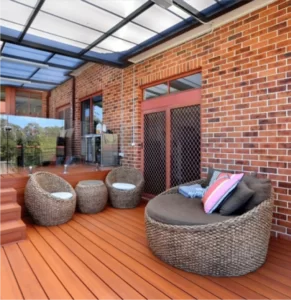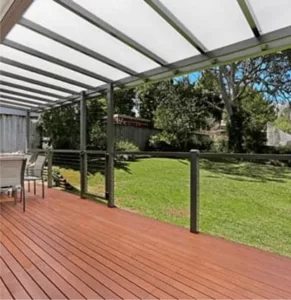
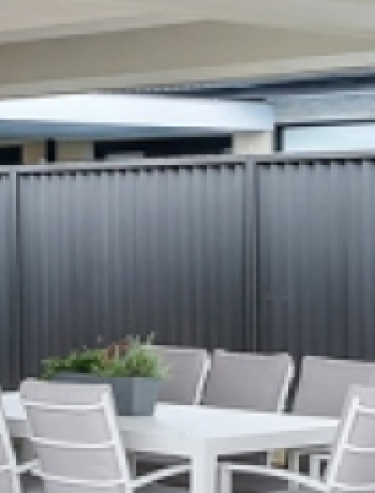
The Ultimate Guide to Building a Sunroom

ABOUT
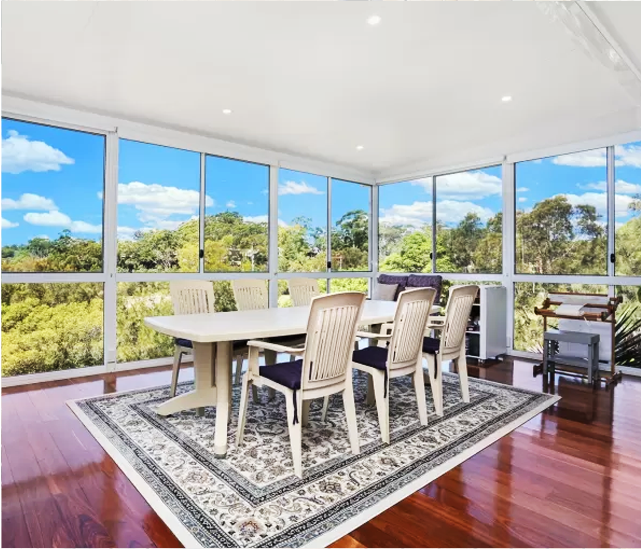
Image Credit: Hi-Craft.
A sunroom, often a beacon of relaxation and comfort, offers more than just an aesthetic enhancement to your Australian home. It’s a versatile space where the warm Australian sun meets the cosy confines of your haven. This guide is designed to walk you through every crucial step – from the initial spark of an idea to the final touches – ensuring that your sunroom is not just an addition, but a perfect amalgamation of your lifestyle and dreams.
We’ll delve into the various types of sunrooms available, each offering its unique charm and functionality. Whether you’re leaning towards a cosy nook for quiet reflection or a sprawling space for lively social gatherings, understanding the different types of sunrooms will help you make informed decisions that align with your vision.
What is a Sunroom?
Characterised primarily by walls made of glass or transparent material, a sunroom extension allows for an immersive experience with the natural surroundings while providing shelter from the unpredictable elements.
This architectural marvel is not just a room; it’s a sanctuary of sunlight and scenic views, where one can bask in the warmth of the sun or gaze at the stars without stepping outside. The allure of a sunroom lies in its versatility – it can be a tranquil retreat for reading and relaxation, a vibrant space for social gatherings, or a lush greenhouse for your favourite flora.
In Australia, where the environment ranges from sun-drenched beaches to verdant countrysides, a sunroom becomes an extension of the home’s living space, harmoniously bridging the gap between indoors and outdoors. It’s a place where families can enjoy the beauty of nature throughout the year, shielded from rain, wind, and insects.
Types of Sunrooms
When it comes to choosing a sunroom, the options are as varied as the Australian landscape. Each type of sunroom is designed to cater to different preferences, needs, and climate conditions.
- Glassrooms: These are characterised by their minimalistic design and maximum glass coverage, offering an unobstructed view of the outdoors. Perfect for those who want to enjoy the landscape without the interference of bulky frames.
- Screenrooms: Ideal for areas with milder climates, screenrooms provide ventilation and protection from insects. They are a great choice for enjoying a breeze without the annoyance of mosquitoes and flies.
- Conservatories: With their roots in European architecture, conservatories are elegant and traditional. They often feature a more substantial structure and can be used for growing plants, as well as a space for relaxation or dining.
Choosing the Right Location
Selecting the right spot for your sunroom is more than just finding available space; it’s about creating a seamless blend of functionality and aesthetics. The location of your sunroom significantly influences how much sunlight it will receive, the views it will frame, and how easily it can be accessed from the rest of your home.

Image Credit: Hi-Craft.
For example, a north-facing sunroom will benefit from consistent sunlight throughout the day, making it ideal for a warm, bright space. Consider the natural surroundings of your property; a sunroom overlooking a garden or a scenic landscape can provide a tranquil backdrop.
Accessibility is also key; integrating the sunroom with your home’s flow ensures it becomes a natural extension of your living space. Think about the proximity to the main areas of your home, such as the kitchen or living room, to enhance its usability and convenience.
Selecting Materials
The materials you choose for your sunroom will define not just its look but also its longevity and performance.
- Glass: In Australia, the choice of glass is crucial due to the varying climate conditions. Options like double-glazing or UV-protective coatings can provide insulation and protect against harsh sunlight, respectively. Tinted glass can reduce glare and offer privacy, while clear glass maximises the view and sunlight.
- Framing: The frame of your sunroom not only supports the structure but also contributes to its overall style. Materials like aluminium offer durability and a modern look, while timber frames provide a classic, warm aesthetic. Consider the maintenance requirements and weather resistance of each material.
- Roofing: Roofing choices can range from polycarbonate panels which allow light to still enter the room from above to insulated panels which create a more traditional room look and feel with better insulation. Glass roofs maximise light entry, perfect for star-gazing or cloud-watching, while solid roofs can provide better insulation and a more enclosed feel.
Interior Design
The interior design of your sunroom is where your style comes to life. This space should be both comfortable and stylish, reflecting your tastes while being functional. Start with the flooring – options like tiled floors are easy to clean and cool underfoot, making them ideal for warmer climates, while carpet or hardwood decking can add warmth in cooler regions.
When it comes to furnishing, choose pieces that complement the purpose of your sunroom. Soft, plush seating is great for a relaxation area, while a dining table and chairs suit an entertainment space.
Remember to incorporate elements like blinds or curtains for adjustable sunlight and privacy control. Decorating with plants can enhance the natural feel, and adding personal touches like artwork or decorative cushions can make the space feel truly yours.
Insulation & Ventilation
Ensuring your sunroom is comfortable year-round starts with effective insulation and ventilation. Proper insulation is crucial to keep the space cool in summer and warm in winter. This involves not only the choice of glass but also the materials used for walls, floors, and ceilings. Insulating materials can significantly reduce heat transfer, helping maintain a consistent temperature.
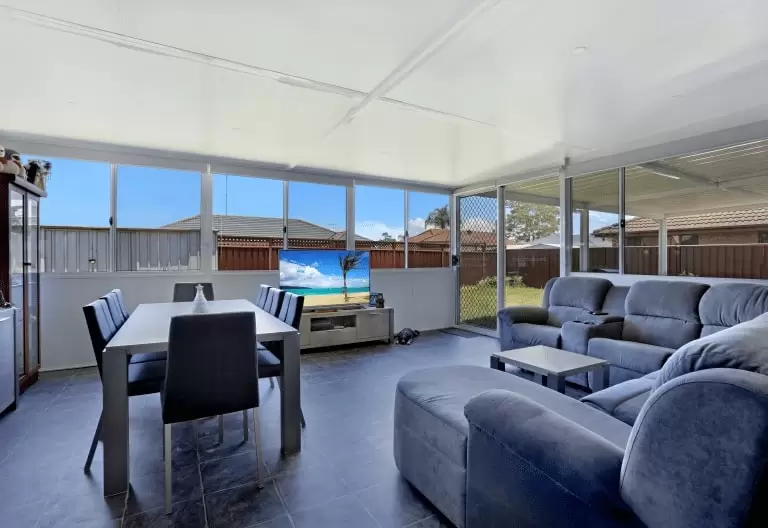
Image Credit: Hi-Craft.
Ventilation, on the other hand, is key to managing air quality and temperature. Natural ventilation can be achieved through strategically placed windows and doors, allowing for cross-ventilation.
This not only helps in cooling down the space during hot days but also ensures a fresh supply of air. In addition, consider adding ceiling fans or operable skylights to enhance air circulation, making the environment more comfortable, especially in warmer months.
Maintenance & Care
Maintaining a sunroom is key to ensuring its longevity and preserving its beauty. Regular maintenance not only keeps it looking great but also helps in identifying and addressing issues before they escalate.
Regular Maintenance Tips
Consistent cleaning is fundamental. Regularly clean the glass to prevent dirt buildup and ensure clear views. This includes both the interior and exterior surfaces. For the frames and sills, use gentle cleaners to avoid damage. It’s also important to keep the tracks of sliding doors and windows clear of debris to ensure smooth operation.
In addition to cleaning, inspect your sunroom periodically for any signs of wear and tear, especially after extreme weather conditions. Check for any sealant cracks or gaps, and reseal them as necessary to maintain insulation and waterproofing.
Adding Personal Touches
Personalising your sunroom can transform it into a space that reflects your personality and style. This can be achieved through decorative elements like rugs, cushions, or art pieces. Consider adding plants to bring a touch of nature indoors, or use themed décor to create a specific ambience, be it a tropical retreat or a cosy nook.
Technology Integration
Modern technology offers numerous ways to enhance the functionality and convenience of your sunroom. Integrating smart home features like automated blinds or climate control systems can add a level of sophistication and ease. Smart lighting systems, which can be adjusted to match the time of day or mood, can also significantly enhance the ambience of your sunroom.
The Environmental Impact
Building and maintaining a sunroom sustainably is not only beneficial for the environment but can also be cost-effective in the long run. Choosing sustainable building materials and practices is a great start. This includes using recycled or locally sourced materials and opting for eco-friendly paints and finishes. Consider the use of rainwater harvesting systems for watering plants in and around the sunroom.
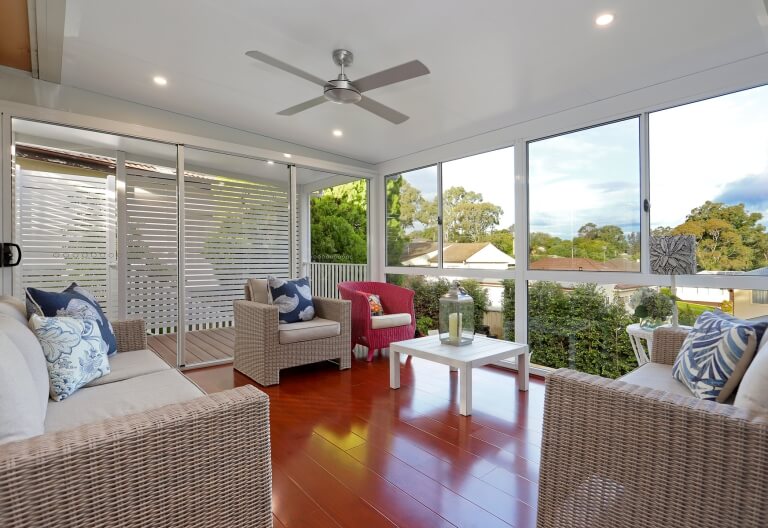
Image Credit: Hi-Craft.
Energy Efficiency
Making your sunroom energy-efficient is crucial. This can be achieved through proper insulation, which reduces the need for excessive heating or cooling. Using energy-efficient appliances and LED lighting further cuts down power consumption.
The Ideal Addition to Your Home
Adding a sunroom to your home is more than just a construction project; it’s an investment in enhancing your lifestyle. A sunroom offers a unique space where the boundaries between the indoors and the natural world blur, creating a serene sanctuary right in your home.
The benefits of a sunroom are numerous. It provides a versatile space that can adapt to your changing needs – be it a quiet place for relaxation, a lively area for entertainment, or a vibrant greenhouse for your plants.
The infusion of natural light not only beautifies your home but also brings health benefits, including improved mood and increased vitamin D levels. A sunroom can also add significant value to your property, both in terms of aesthetics and functionality.
A sunroom is a delightful addition to any home. It’s a place where memories are made, where moments of tranquillity and excitement coexist, and where the beauty of the outdoors can be appreciated in comfort and style. Whether you’re watching the sunrise with a cup of coffee, enjoying a family meal under the stars, or simply unwinding amidst your indoor garden, a sunroom is a space that continually adapts to enrich your life.

